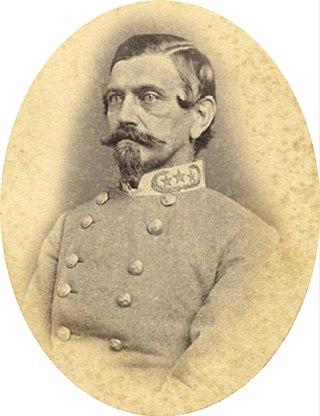
James Cantey was a Confederate States Army brigadier general during the American Civil War. He was a lawyer, slave owner, state legislator in South Carolina and officer in the Mexican–American War, and a slave owner in Alabama both before and after the war.
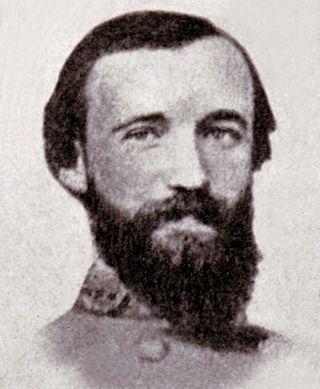
Victor Jean Baptiste Girardey was a Confederate States Army officer during the American Civil War. He was promoted from Captain to temporary Brigadier General less than a month before his death in battle. Girardey had served as a staff officer from the beginning of the war until August 3, 1864. Then, he was promoted to temporary brigadier general, to rank from July 30, 1864, and assumed command of Ambrose R. Wright's former brigade on the Darbytown Road on the eastern end of the defenses of Richmond, Virginia. On August 16, 1864, during the Second Battle of Deep Bottom, Girardey was killed in action near Fussell's Mill in Henrico County, Virginia.
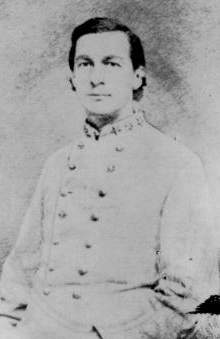
Alexander William Campbell, was a Confederate States Army brigadier general during the American Civil War. He was a lawyer in Tennessee before and after the war, mayor of Jackson, Tennessee, 1856, and an unsuccessful candidate for the Democratic Party nomination for governor of Tennessee in 1880.

Brigadier-General Nathaniel Harrison Harris was a senior officer of the Confederate States Army who commanded infantry in the Eastern theater of the American Civil War.

James Edward Harrison was a Confederate States Army brigadier general during the American Civil War. He served in the Trans-Mississippi Department and fought in campaigns in Louisiana. Before the war, he was a two-term Mississippi state senator before moving to Texas in 1857. After the war, he was a trustee of Baylor University.

Thomas Harrison was a Confederate States Army brigadier general during the American Civil War. He had a law practice in Waco, Texas, after moving to Texas in 1843. He was a Mexican–American War veteran and Texas state legislator before the war. After the war, he was a district judge at Waco and was a Democratic Party politician and Presidential elector.
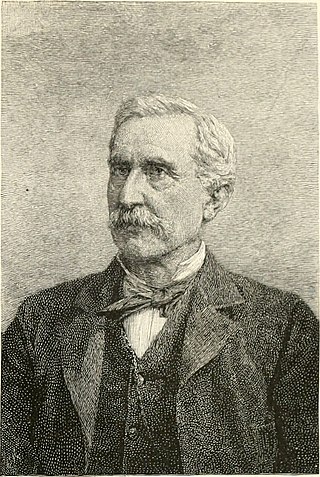
William Whann Mackall was a Seminole Wars veteran, Mexican–American War veteran and Confederate States Army brigadier general during the American Civil War. He was a United States Army officer for 24 years before he resigned his commission in order to join the Confederate Army. After the Civil War, he was a farmer in Fairfax County, Virginia.

Young Marshall Moody was a Confederate States Army officer who was promoted to brigadier general near the end of the American Civil War. He was a teacher, merchant, and circuit court clerk in Marengo County, Alabama, before the war. He died from yellow fever during a business trip to New Orleans, Louisiana, on September 18, 1866.

Patrick Theodore Moore was an Irish-born Confederate States Army brigadier general during the American Civil War. As colonel leading the 1st Virginia Infantry Regiment, he was severely wounded at the Battle of Blackburn's Ford on July 18, 1861, and was incapacitated for further field service. Thereafter, he served as an aide-de-camp, first to General Joseph E. Johnston and then to Lieutenant General James Longstreet, a judge advocate general on court martial duty and a brigade commander of Virginia Reserves in the Department of Richmond. He was a merchant and Virginia militia officer before the war and an insurance agent after the conflict.

Daniel Harris Reynolds was a Confederate States Army brigadier general during the American Civil War. He was born at Centerburg, Ohio, but moved to Iowa, Tennessee, and finally to Arkansas before the Civil War. He was a lawyer in Arkansas before the war. After the war, Reynolds resumed his practice of law and was a member of the Arkansas Senate for one term.
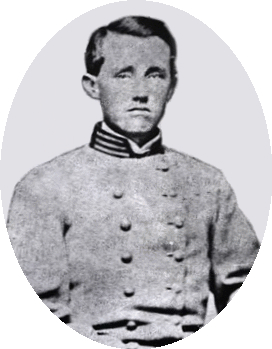
John Caldwell Calhoun Sanders was one of the Confederate States Army's youngest brigadier generals during the American Civil War. He was killed in the Battle of Globe Tavern along the Weldon Railroad during the Siege of Petersburg, Virginia on August 21, 1864.

James Phillip Simms was a Confederate States Army brigadier general during the American Civil War. He was a lawyer in Covington, Georgia, before and after the war. He served two non-consecutive terms in the Georgia legislature after the war.

Clement Hoffman Stevens was a Confederate States Army brigadier general during the American Civil War. He designed and constructed the iron-clad battery on Morris Island at the mouth of Charleston Harbor which was used in the bombardment of Fort Sumter at the outbreak of the Civil War. He was killed in action at the Battle of Peachtree Creek during the Atlanta Campaign.

Walter Husted Stevens was a Confederate States Army brigadier general during the American Civil War. He graduated from the United States Military Academy at West Point, New York and served in the corps of engineers, mostly in Louisiana and Texas. He was an engineer for the Army of Northern Virginia. He was reputed to be the last uniformed man to cross the Mayo Bridge during the evacuation of Richmond, Virginia, after the Confederate defenses of Petersburg, Virginia, collapsed on April 2, 1865. After the Civil War, Stevens became the superintendent and engineer of the Mexican Imperial Railroad. He died of yellow fever at Vera Cruz, Mexico, November 12, 1867.

Allen Thomas was a Confederate States Army brigadier general during the American Civil War. He was born in Howard County, Maryland, and became a lawyer but he moved to Louisiana in the later 1850s and became a planter and colonel in the Louisiana militia. After the war, he was a planter, Presidential elector in 1872 and 1880, professor of agriculture at Louisiana State University and coiner at the United States Mint at New Orleans, Louisiana. He moved to Florida in 1889. Between 1894 and 1897, he was United States Minister to Venezuela. He moved to Mississippi in 1907 and died there in that year. He was buried at Donaldsonville, Louisiana.

William Stephen Walker was a Confederate States Army brigadier general during the American Civil War. He was born in Pittsburgh, Pennsylvania, but was raised by Robert J. Walker, his uncle, who was a Secretary of the Treasury and U.S. Senator. Walker served as a first lieutenant in the United States Army during the Mexican–American War from 1847 to 1848. He was discharged in 1848. Walker rejoined the army as captain in the 1st U.S. Cavalry Regiment on March 3, 1855, and served until he resigned on May 1, 1861. Walker was wounded in the left arm and lost his left foot during the Battle of Ware Bottom Church during the Overland Campaign. After the war, he lived at Atlanta, Georgia.
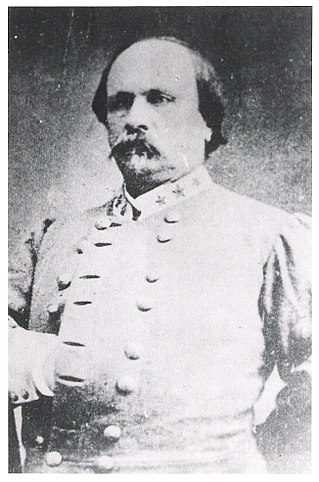
William Henry Wallace was a Confederate States Army brigadier general during the American Civil War. Before the Civil War, he was a planter, newspaper publisher, lawyer and South Carolina legislator in 1860 who supported the state calling a secession convention. He served in the Eastern Theater of the American Civil War, including service as a brigade commander in the Army of Northern Virginia. After the Civil War, he was a lawyer, planter, South Carolina legislator and circuit judge.

David Addison Weisiger was a Confederate States Army brigadier general during the American Civil War. Weisiger served as a second lieutenant in the 1st Virginia Volunteers, an infantry regiment, during the Mexican–American War. After the war, he became a leading businessman in Petersburg, Virginia. Between 1853 and 1860, he served in the 39th Virginia Militia Regiment, rising from captain to colonel. After the Civil War, he was a bank cashier at Petersburg, Virginia and a businessman at Richmond, Virginia.

Claudius Charles Wilson was a Confederate States Army colonel and brigade commander during the American Civil War. Wilson's promotion to brigadier general on November 16, 1863, was confirmed posthumously. Wilson was a lawyer and U.S. Solicitor general for eastern Georgia before the Civil War. Wilson died of a fever while in camp at Ringgold, Georgia, on November 26, 1863.
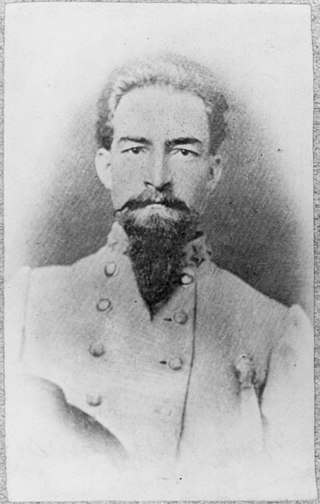
William Hugh Young was a Confederate States Army brigadier general during the American Civil War. He was a university student and received a military education before the Civil War. He was a lawyer and real estate operator in San Antonio, Texas after the Civil War. Young spent nine months at the end of the war as a prisoner of war.




















